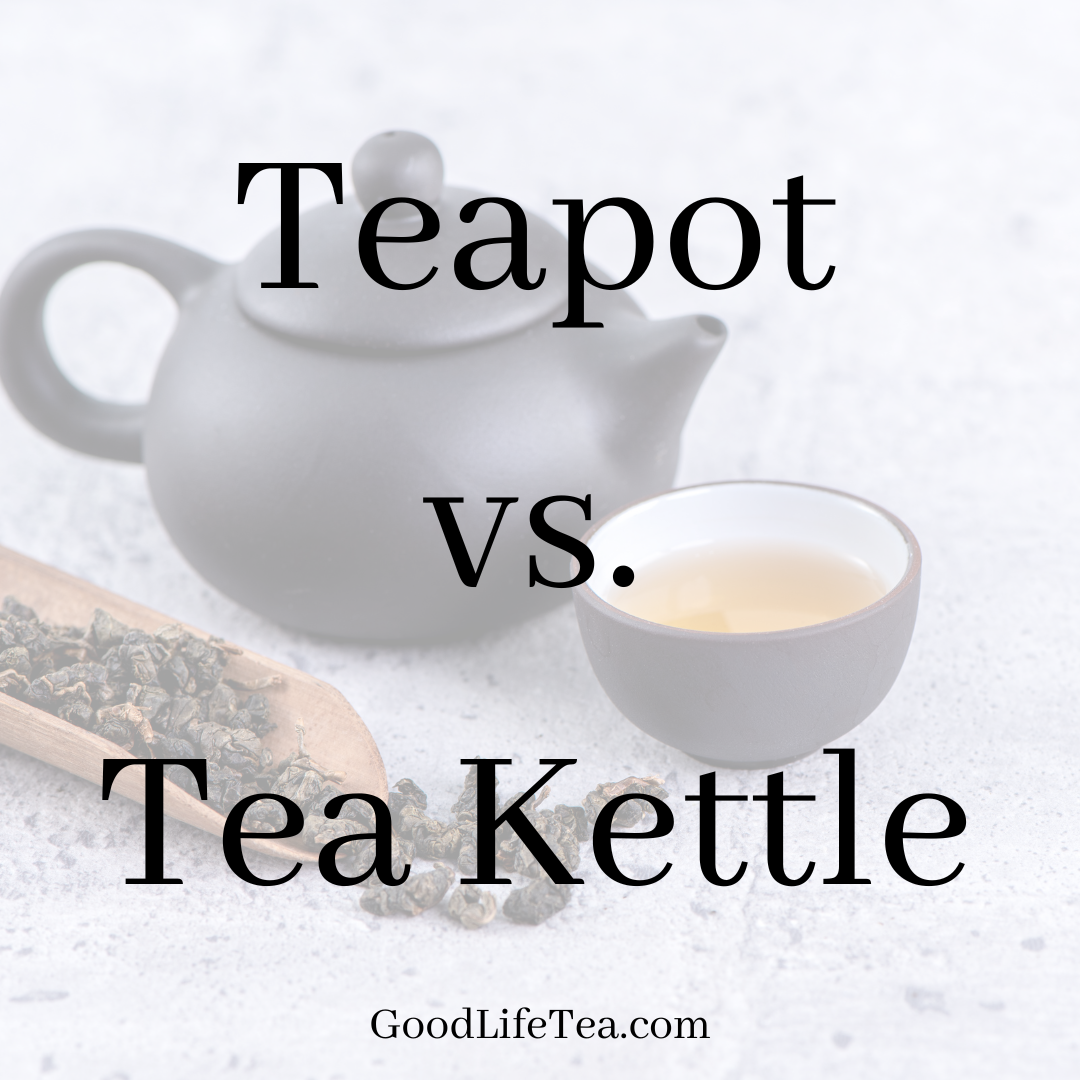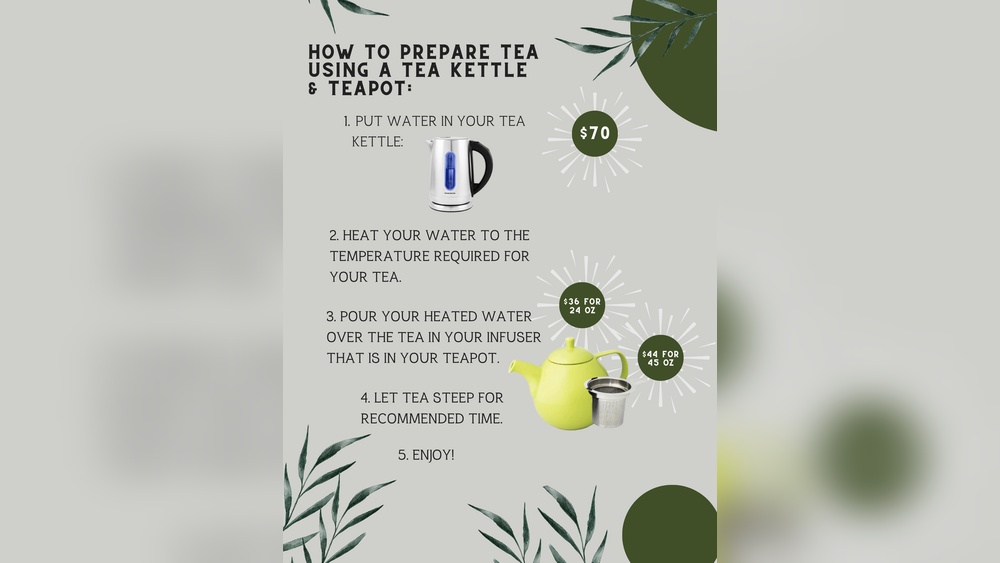Have you ever found yourself confused between a teapot and a tea kettle? You’re not alone.
Many people use these two words interchangeably, but they actually serve different purposes. Knowing the difference can make your tea experience much better. Whether you’re brewing your favorite loose leaf or just heating water, understanding these simple tools can save you time and improve your daily ritual.
Keep reading, and by the end, you’ll know exactly which one fits your tea needs perfectly.
Teapot Basics
A teapot is a simple yet essential item for tea lovers. It is made to brew and serve tea. Understanding teapot basics helps to choose the right one for your needs.
Teapots have a unique design and function. They differ from other kitchen tools like tea kettles. Knowing these differences improves your tea experience.
Design And Purpose
Teapots have a round body with a lid on top. They come with a spout for pouring tea smoothly. The handle makes it easy to hold and serve tea. Their main purpose is to steep tea leaves in hot water. They keep the tea warm while it brews. Designed for serving, they look elegant on any table.
Materials Used
Teapots are made from various materials. Ceramic is common for its heat retention and style. Glass teapots allow you to see the tea brewing. Porcelain offers a classic, smooth finish. Some teapots are made of cast iron for durability and warmth. Each material affects the tea flavor and temperature differently.
Common Sizes And Shapes
Teapots come in many sizes. Small teapots hold one or two cups. Larger ones can serve six or more people. Shapes vary from round to oval or even square. Each shape affects how the tea steeps and pours. Choose a size and shape that fits your tea habits and style.

Credit: xtrema.com
Tea Kettle Essentials
A tea kettle is a key tool for boiling water quickly and safely. It is designed to heat water on a stove or electric base. The sound of a whistle signals when the water is ready.
Tea kettles come in many styles and materials. Each type has its own benefits. Knowing the basics helps in choosing the right kettle for your needs.
Function And Use
The main job of a tea kettle is to boil water. It heats water faster than a pot. Most kettles have a spout for easy pouring. Some kettles whistle when water boils. This feature prevents water from boiling dry. Electric kettles use electricity for fast heating. Traditional stovetop kettles work on gas or electric stoves.
Popular Materials
Tea kettles come in stainless steel, glass, and cast iron. Stainless steel kettles are durable and easy to clean. Glass kettles let you see the water boil. Cast iron kettles keep heat longer. Some kettles have enamel coating for style and protection. Each material affects how fast water heats and the kettle’s weight.
Variety In Sizes
Tea kettles are available in small, medium, and large sizes. Small kettles hold about 1 liter of water. Medium kettles usually hold 1.5 to 2 liters. Large kettles can hold 3 liters or more. Size depends on how many cups of tea you want to make. Choose a size that fits your daily tea habits.
Heating Methods
Heating methods play a key role in the use of teapots and tea kettles. They affect how fast water heats and the safety of the process. Different types of kettles and teapots use various heating sources. Understanding these methods helps you pick the right one for your needs.
Stovetop Kettles
Stovetop kettles heat water directly on a burner. They work on gas, electric, or induction stoves. The kettle sits on the heat source until the water boils. Many stovetop kettles whistle when ready. This method is simple and does not need electricity.
Electric Kettles
Electric kettles heat water using an internal heating element. You plug them into a power outlet. They heat water faster than stovetop kettles. Many electric kettles have automatic shut-off features. This makes them safe and easy to use.
Alternative Heating Options
Some teapots and kettles use other heating methods. These include campfire, solar power, or portable stoves. These options suit outdoor activities or places without electricity. They offer flexibility for heating water in different settings.
Brewing Vs Boiling
Brewing and boiling are two key steps in making tea. They sound similar but serve very different purposes. Boiling heats the water, while brewing extracts flavors from the tea leaves. Understanding this difference helps choose the right tool for each task.
Role Of Teapot In Brewing
A teapot is designed for brewing tea. It holds hot water and tea leaves together. The temperature inside the pot stays steady, allowing flavors to develop well. Tea leaves steep slowly, releasing their taste and aroma. This process creates a smooth and rich cup of tea. Teapots often have a built-in strainer to keep leaves from pouring out.
Role Of Kettle In Boiling Water
A tea kettle’s main job is to boil water quickly. It heats water to 212°F (100°C), the boiling point. Kettles usually have a spout for easy pouring. Some whistles to signal when water boils. Boiling water is necessary to prepare tea properly. It kills impurities and prepares water for steeping tea leaves.
Design Differences
Design differences between a teapot and a tea kettle affect how they look and work. Each has unique features suited for its purpose. These design elements make it easy to tell them apart and choose the right one for your needs.
Spout And Lid Features
A teapot usually has a smaller spout for pouring brewed tea gently. Its lid fits tightly to keep the tea warm. Tea kettles have a wider spout to pour boiling water quickly. Their lids are often larger and removable for easy filling.
Handle Placement
Teapots often have a side or top handle for comfortable pouring. The handle is designed to stay cool when serving tea. Tea kettles have a sturdy handle on top for lifting hot water safely. Some kettles also have heat-resistant grips for better control.
Aesthetic Considerations
Teapots come in many decorative styles and colors. They are made to look nice on a dining table. Tea kettles focus more on functionality but can have simple, classic designs. Their look matches kitchen appliances more than tableware.
Usage Tips
Knowing how to use a teapot and a tea kettle can improve your tea experience. Each has a special role in making tea. Understanding their uses helps you choose the right tool for each moment.
When To Use A Teapot
Use a teapot to brew and serve tea. It holds hot water and tea leaves together. This allows the tea to steep properly. Teapots are perfect for sharing tea with others. They keep the tea warm longer and look nice on the table. Choose a teapot when you want a calm, relaxed tea time.
When To Choose A Kettle
A kettle is made to boil water fast. It heats water to the right temperature for tea. Use a kettle when you need hot water quickly. Kettles are good for any tea type that needs boiling water. Pick a kettle for simple, quick tea or other hot drinks.
Cleaning And Maintenance
Keep your teapot and kettle clean for the best taste. Wash the teapot after each use to avoid old tea flavors. Use warm water and mild soap. Rinse well to remove soap residue. For kettles, remove mineral buildup often. Use vinegar or lemon juice to clean inside. Dry both items completely before storing to avoid rust.
Cultural Significance
The cultural importance of teapots and tea kettles goes beyond their use. These objects hold a special place in many societies. They reflect history, tradition, and daily habits.
Each item carries a unique story. They show how people value tea and the way they prepare it. The differences in design and use reveal cultural diversity.
Teapot Traditions
Teapots often play a key role in ceremonies and social events. In countries like China and Japan, teapots are part of ancient rituals. They symbolize respect and friendship. Beautiful designs and careful pouring highlight the art of tea making. Families pass down teapots through generations as treasured heirlooms. These vessels encourage slower, mindful tea drinking. The teapot turns tea time into a shared experience.
Kettle In Daily Life
Tea kettles focus more on function than form. People use kettles to boil water quickly every day. In many homes, the kettle signals a break or moment of rest. Its whistle is familiar and comforting. Kettles are common in kitchens worldwide, showing a simple need for hot water. They support fast-paced lifestyles but still connect to the tea culture. The kettle is a tool, yet it holds everyday importance.

Credit: uphaartea.in

Credit: www.goodlifetea.com
Frequently Asked Questions
What Is The Main Difference Between A Teapot And Tea Kettle?
A teapot is designed for steeping and serving tea. A tea kettle is used to boil water before brewing. Teapots usually have a wider body, while kettles are built for heating water efficiently.
Can I Use A Tea Kettle As A Teapot?
Technically, yes, but it’s not ideal. Tea kettles boil water but lack features for steeping tea. Teapots allow tea leaves to infuse properly, providing better flavor and serving convenience.
Which Material Is Better For Teapots And Kettles?
Teapots are often ceramic, glass, or porcelain for heat retention and aesthetics. Tea kettles are usually stainless steel or cast iron for durability and fast boiling. Material choice affects heat retention and usability.
Are Electric Kettles Different From Traditional Tea Kettles?
Yes, electric kettles use electricity to quickly boil water. Traditional tea kettles are heated on a stove. Electric kettles offer convenience and speed but lack the classic design charm of stovetop kettles.
Conclusion
Teapots and tea kettles serve different purposes in tea making. Teapots hold brewed tea and help it cool gently. Tea kettles boil water quickly for brewing tea. Choosing the right one depends on your tea routine. Both add charm to your kitchen.
Understanding their roles helps you enjoy tea better. Simple tools, but each has its unique job. Now, you can pick wisely for your tea moments.

